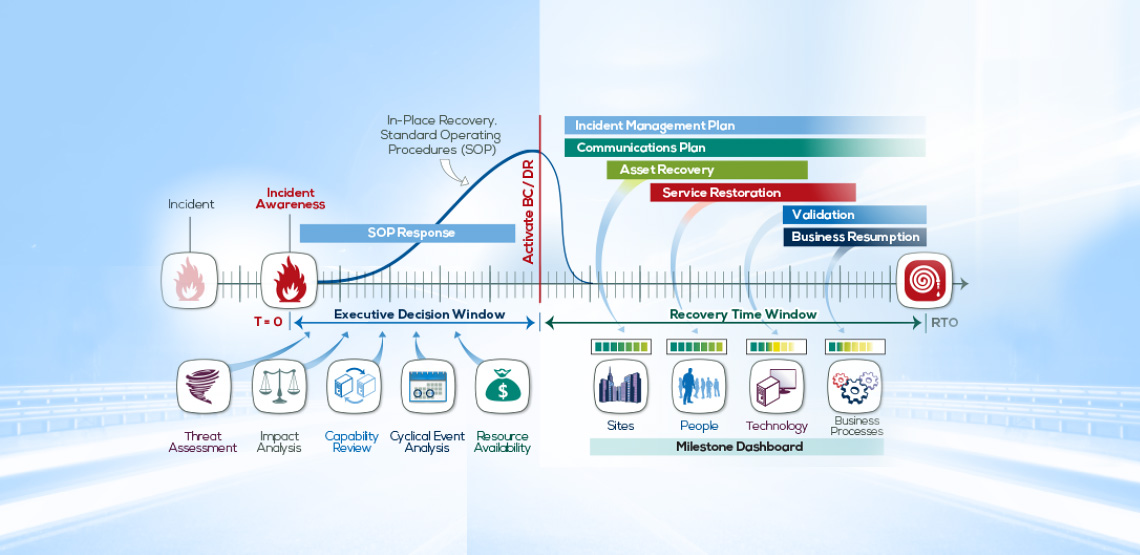Business Continuity (BC) planners have long had disagreements with IT regarding when the IT RTO clock starts ticking and when the underlying Business Process stakeholders assume it does.
In today’s technology-leveraged business world, BC planners base their Continuity plans on Application RTO’s. Meanwhile, IT Disaster Recovery (DR) planners understand that triggering a DR plan can be both costly and risky –factors that make ‘disaster’ declarations difficult.
The result: a fuzzy period between discovery of an IT service disruption and the declaration of a ‘disaster’. That fuzziness must stop. We can’t expect IT to skip their analyses, but neither can we continue to handicap Business Continuity Teams by allowing effective Application RTO’s to be impossible to pin down.
Management needs to seize control. Those who can exert control must mandate and enforce a protocol for IT ‘declaration’ decisions.
Call it an Executive Decision Window (EDW). Determine the necessary steps to a decision, set a maximum time allotment to make the decision – and see that it gets enforced.
The result will rid us of that RTO gap. There’s no logical reason the BCM industry shouldn’t get behind this idea. Let’s make it happen.











